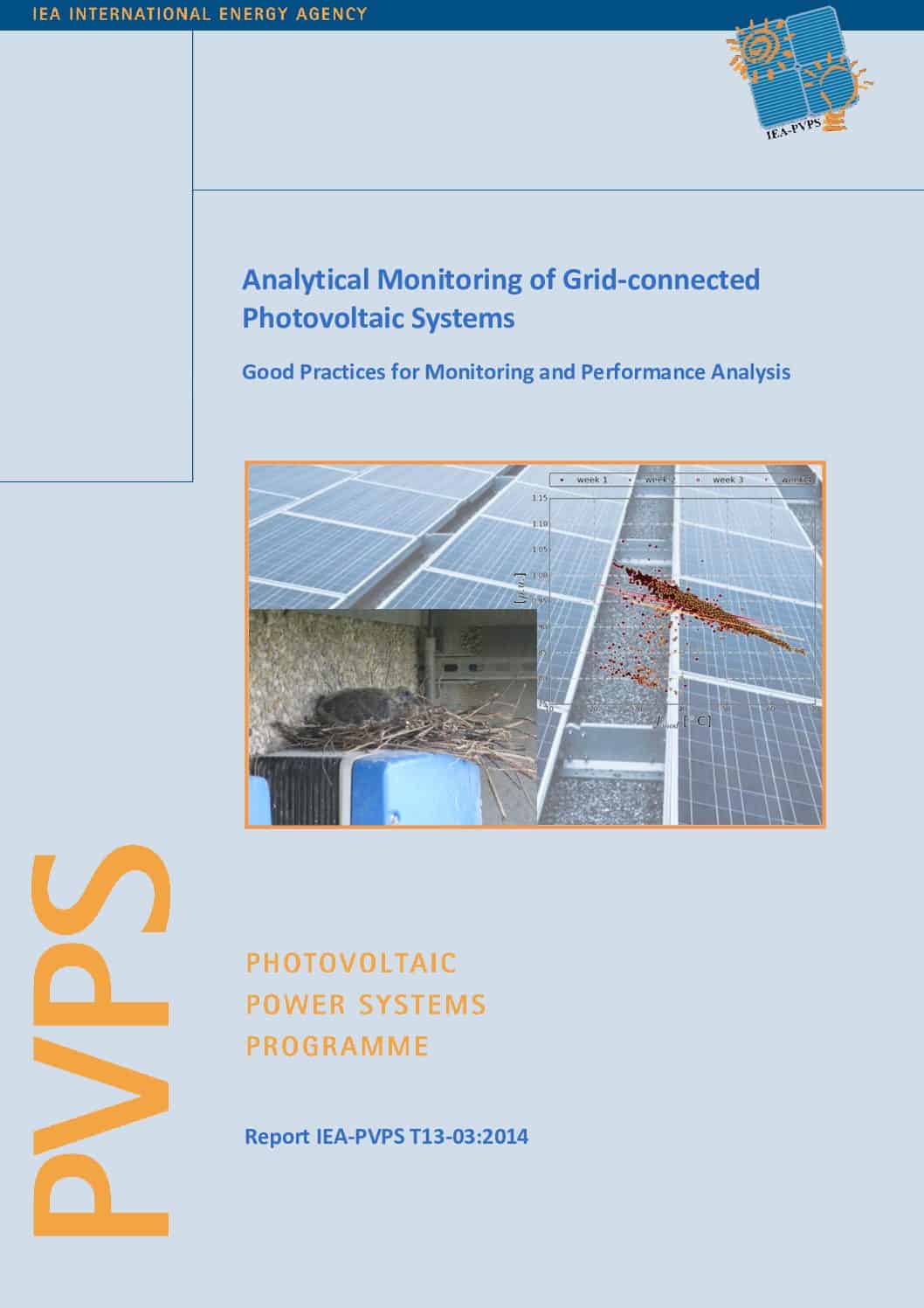This report focuses on the analytical assessment of photovoltaic (PV) plant performance on the overall PV system level. In particular, this report provides detailed guidelines and comprehensive descriptions of methods and models used when analyzing grid-connected PV system performance.
The main objectives of this report are:
- to propose good practices for PV system monitoring today,
- to determine and understand PV system losses that cannot be assessed by direct measurements in commercial PV systems,
- to determine and understand the behavior of new PV technologies in long-term system operation,
- to learn from previous bad experiences and draw out lessons for new installations in the IEA PVPS member countries.
In the starting section, “Photovoltaic System Monitoring”, best practices in PV monitoring are documented. In addition to describing general monitoring approaches and listing common reference documents, the section outlines peculiarities of different measurement equipment and highlights best practices for hardware configuration and installation. An overview of various interesting measurement quantities and related failure patterns is also provided.
In the second section, “Understanding Photovoltaic System Operation through Monitoring”, comprehensive guidelines on how to analyze performance data are given, based on concrete examples using periodic linear regression. The section highlights the versatility of this linear-regression-based approach for PV performance analysis. The approach can, for example, be used to assess the influence of module temperature on array and system performance, the influence of wind speed, DC voltage deviations and their relation to module temperature, as well as the resilience of grid voltage to active power.
The majority of presented methods and tools can be applied irrespective of particular module technologies. However, a number of special effects related to less common module technologies require some consideration, as outlined in a dedicated chapter on “new” technologies. In particular, CIGS and amorphous silicon modules have been analyzed in this study. Based on data from different experimental installations in the field, the specific behavior of the new modules was modeled and compared to classical crystalline silicon PV. The existing models for crystalline silicon require major modifications especially for modules involving amorphous silicon. This is detailed in the third chapter, “Understanding Effects Related to Special Technologies”.
Finally, measures that can help improve the performance of PV systems are described in the fourth chapter, “PV System Performance Improvement”. This section outlines recommendations for improvement, based on lessons learned from PV system design over the past decade. To this end, a brief introduction to traditional performance indicators is given, along with an overview of the trends in PV system performance over the years. Key system design decisions, such as mounting angle and row distance, inverter to module power ratio, and cabling optimizations, are also addressed. Several examples on both shading losses and inverter to module power ratio are highlighted, providing deeper insight into the pitfalls and merits of various system design options. Finally, the basic approach of real-time data processing is described as a means to optimize system output by increased responsiveness to outages.
The full report delivers a comprehensive set of practical guidelines for analytical PV system monitoring. Applied systematically, these guidelines will contribute to further increasing the performance of PV power plants.
